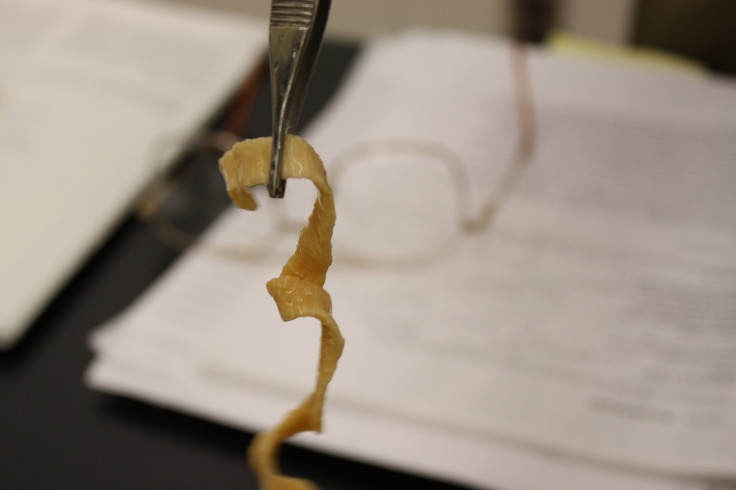Parasitic Tapeworm Removed From Man's Brain After Living There For 4 Years

For the first time in the UK, a tapeworm that originates in Asia known as Spirometra erinaceieuropaei was removed from a man’s brain, after burrowing in there for four years. Fortunately, this particular worm was a benign one; if it had been more severe, it could have laid eggs that would have damaged the brain far more.
The patient was a 50-year-old Chinese man who had been experiencing headaches, seizures, and memory flashbacks — symptoms that stumped doctors at the UK hospital at which he was admitted. But after several tests for tuberculosis, HIV, and Lyme disease returned negative, doctors decided to operate and pulled out a 1cm-long tapeworm. They then sent it to the Wellcome Trust Sanger Institute in Cambridge in order to be examined.
Doctors identified the genome of the worm in a study, which they believe can offer new ways to understand, diagnose, and treat the parasite — since very little is known about it. Spirometra is a rare tapeworm, with only 300 infected human cases having been recorded since 1953. What we do know is that the parasite causes inflammation in the body’s tissues, known as sparganosis (a type of inflammation spurred specifically by tapeworms), ultimately leading to memory loss, seizures, and headaches. Doctors believe that people become infected after eating small crustaceans from lakes, raw reptile meat, or using a raw frog poultice (such as used in traditional Chinese medicine). It’s also possible to become infected after drinking water contaminated with the parasite’s larvae, or babies.
“We did not expect to see an infection of this kind in the UK, but global travel means that unfamiliar parasites do sometimes appear,” Dr. Effrossyni Gkrania-Klotsas of the Department of Infectious Diseases at Addenbrooke’s NHS Trust, an author of the study, said in a press release.
The parasite has a lengthy way of reaching humans: It starts out in water, infecting small crustaceans, which are then eaten by frogs or snakes and are thus in turn infected. Animals like cats or dogs that eat reptiles can then be infected.
Brain scans show that the 1cm-long parasite travelled 5cm from the right side of the man’s brain to the left. After removing it, surgeons placed it on a histology slide to examine its DNA.
“The clinical histology slide offered us a great opportunity to generate the first genome sequence of this elusive class of tapeworms,” Dr. Hayley Bennett, an author of the study and a member of the Wellcome Trust Sanger Institute, said in the press release. “However, we only had a minute amount of DNA available to work with — just 40 billionths of a gram. So we had to make difficult decisions as to what we wanted to find out from the DNA we had.”
The study also found that the tapeworm is resistant to the anti-tapeworm drug, albendazole, which can help doctors in finding a treatment for it. “We can now diagnose sparganosis using MRI scans, but this does not give us the information we need to identify the exact tapeworm species and its vulnerabilities,” Gkrania-Klotsas said in the press release. “Our work shows that, even with only tiny amounts of DNA from clinical samples, we can find out all we need to identify and characterize the parasite.”
Source: Bennett H, Mok H, Gkrania-Klotsas E, Stanley E, Tsai I, Antoun N. “The genome of the sparganosis tapeworm Spirometra erinaceieuropaei isolated from the biopsy of a migrating brain lesion.” Genome Biology, 2014.



























